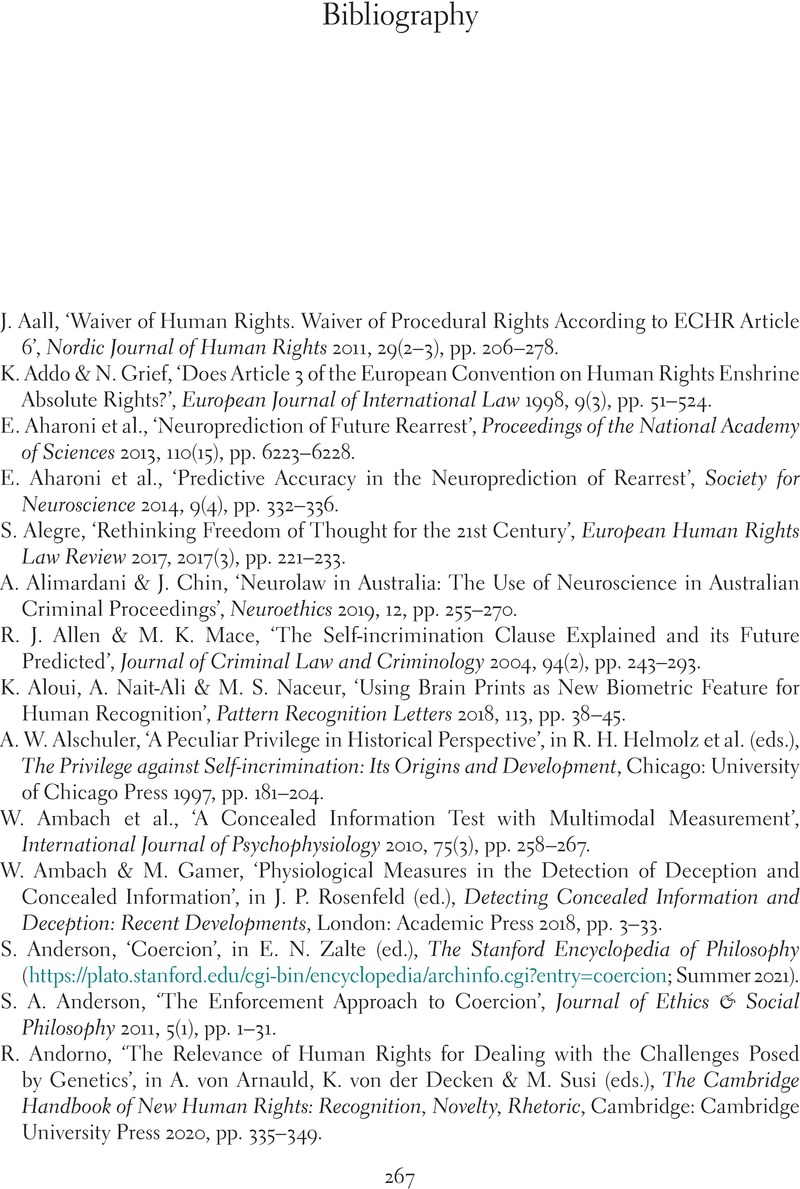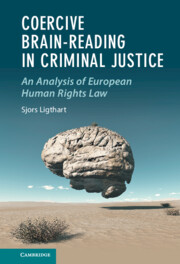Book contents
- Coercive Brain-Reading in Criminal Justice
- Law and the Cognitive Sciences
- Coercive Brain-Reading in Criminal Justice
- Copyright page
- Contents
- Tables
- Acknowledgements
- Abbreviations
- 1 Setting the Stage
- 2 Brain-Reading Technologies
- 3 Coercive Brain-Reading and the Prohibition of Ill-Treatment
- 4 Coercive Brain-Reading and the Right to Respect for Private Life
- 5 Coercive Brain-Reading and the Rights to Freedom of Thought and to Freedom of Expression
- 6 Coercive Brain-Reading and the Privilege against Self-incrimination
- 7 Procedural Implications of Brain-Reading in Breach of the ECHR: Excluding Unlawfully Obtained Evidence?
- 8 Discussion and Perspectives
- 9 Concluding Observations
- Bibliography
- Index
- References
Bibliography
Published online by Cambridge University Press: 25 August 2022
- Coercive Brain-Reading in Criminal Justice
- Law and the Cognitive Sciences
- Coercive Brain-Reading in Criminal Justice
- Copyright page
- Contents
- Tables
- Acknowledgements
- Abbreviations
- 1 Setting the Stage
- 2 Brain-Reading Technologies
- 3 Coercive Brain-Reading and the Prohibition of Ill-Treatment
- 4 Coercive Brain-Reading and the Right to Respect for Private Life
- 5 Coercive Brain-Reading and the Rights to Freedom of Thought and to Freedom of Expression
- 6 Coercive Brain-Reading and the Privilege against Self-incrimination
- 7 Procedural Implications of Brain-Reading in Breach of the ECHR: Excluding Unlawfully Obtained Evidence?
- 8 Discussion and Perspectives
- 9 Concluding Observations
- Bibliography
- Index
- References
Summary

- Type
- Chapter
- Information
- Coercive Brain-Reading in Criminal JusticeAn Analysis of European Human Rights Law, pp. 267 - 288Publisher: Cambridge University PressPrint publication year: 2022



